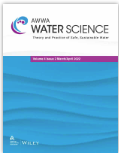
Hi all…we are all familiar with the issue of lead in drinking water but not so much with the impact of copper, which is almost ubiquitous in all but some newer buildings. The authors of a recent AWWA Water Sciences review article (below) made some very interesting observations relating to copper exceedances and control measures in US schools and childcare centers including that “flushing contaminated water was the most evaluated remedial action but was unreliable because copper quickly rebounded when flushing stopped.” They point to a second potentially important finding, “building water treatment systems have been used, but some were not capable of making the water safe.” The USEPA has established a maximum contaminant level goal (MCLG) and action level of 1.3 mg/L. Health Canada’s guidelinemaximum acceptable concentration (MAC) is 2 mg/L for total copper in drinking water, based on a sample of water taken at the tap. The aesthetic objective for total copper in drinking water is, however, lower at 1 mg/L. (See also the USEPA Revised Lead and Copper Rule , Dec 16, 2021, for additional details.)
Bill ____________________________________________
School and childcare center drinking water: Copper chemistry, health effects, occurrence, and remediation
Elizabeth Montagnino, Darren A. Lytle, Joan Rose, David Cwiertny, Andrew J. Whelton
AWWA Wat Sci. 2022;e1270. https://awwa.onlinelibrary.wiley.com/doi/abs/10.1002/aws2.1270
Abstract
“The study goal was to better understand the risks of elevated copper levels at US schools and childcare centers. Copper health effects, chemistry, occurrence, and remediation actions were reviewed. Of the more than 98,000 schools and 500,000 childcare centers, only 0.2% had copper water testing data in the federal Safe Drinking Water Information System database. Of the facilities designated public water systems, about 13% had reported an exceedance. Schools that were not designated a public water system (PWS) also had exceedances. Few studies document levels in schools and childcare centers. Widely different sampling and remedial actions were reported. Flushing contaminated water was the most evaluated remedial action but was unreliable because copper quickly rebounded when flushing stopped. Building water treatment systems have been used, but some were not capable of making the water safe. The health risk was difficult to determine due to the limited occurrence data and lack of best management practice studies. A national drinking water testing campaign and field studies are recommended.”





